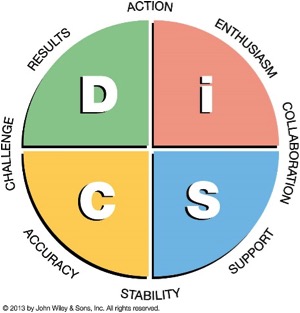D stands for Dominance—getting the best out of your D style team members starts with fully understanding their strengths and their priorities: Results, Action and Challenge.
- Highly driven and strong willed, they constantly look for new challenges and opportunities as they strive for Results. They are motivated by the need to make their mark and don’t let obstacles get in their way.
- D style talent also puts a priority on Assertively promoting their bold ideas, they tend to focus on achieving their goals quickly and forcefully, thriving in a fast-paced environment.
- Independent-minded D style types also prioritize Challenge. Because controlling outcomes is so important, they often take a skeptical and questioning approach to ideas they don’t agree with or in situations where things are not totally clear to them.
 People with a D style are often highly respected by the organization. With their direct, businesslike approach to opportunities and challenges, they are seen as go-getters who deliver on their promises.
People with a D style are often highly respected by the organization. With their direct, businesslike approach to opportunities and challenges, they are seen as go-getters who deliver on their promises.
While it is true that the strengths of your D style talent are critical to getting things done, people with this style also can be extremely blunt and forceful. Under pressure, they can also become very demanding and impatient.
The very motivators that drive positive D style behavior—results, action, challenge—can also result in unnecessary conflict with other styles. Co-workers with the opposing S style, for example, may find it particularly challenging to work effectively with their D style colleagues. Even two very strong D styles can butt heads when neither is willing to flex their behaviors and find a way to accommodate the needs of the other.
The D style individual has fears of being taken advantage of and appearing weak. The D style would greatly increase effectiveness through patience and empathy as well as being aware of the various styles of co-workers and team members. When working with a D style, we should keep in mind that they are fast paced and look for results quickly. Rather than approaching a D style with a long, lengthy request or explanation, a brief to the point narrative would be more effective and would enable a more cohesive working relationship.
When employees understand themselves, as well as others—what motivates them, what stresses them out, what drives them to achieve their goals—there’s less conflict, more collaboration, better working relationships, and healthier workplaces. That’s where the Everything DiSC Workplace® solution can help.

